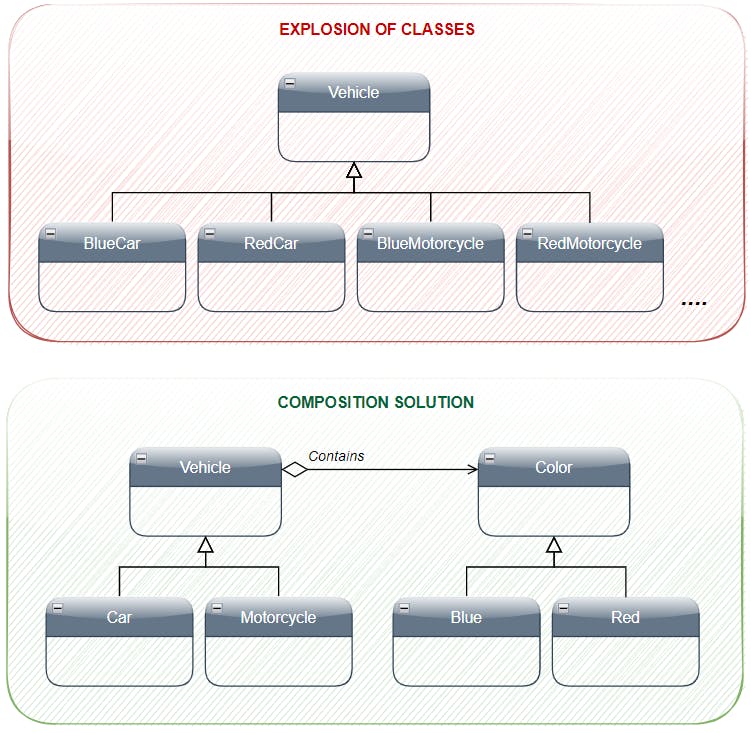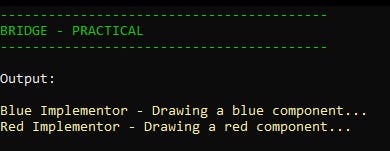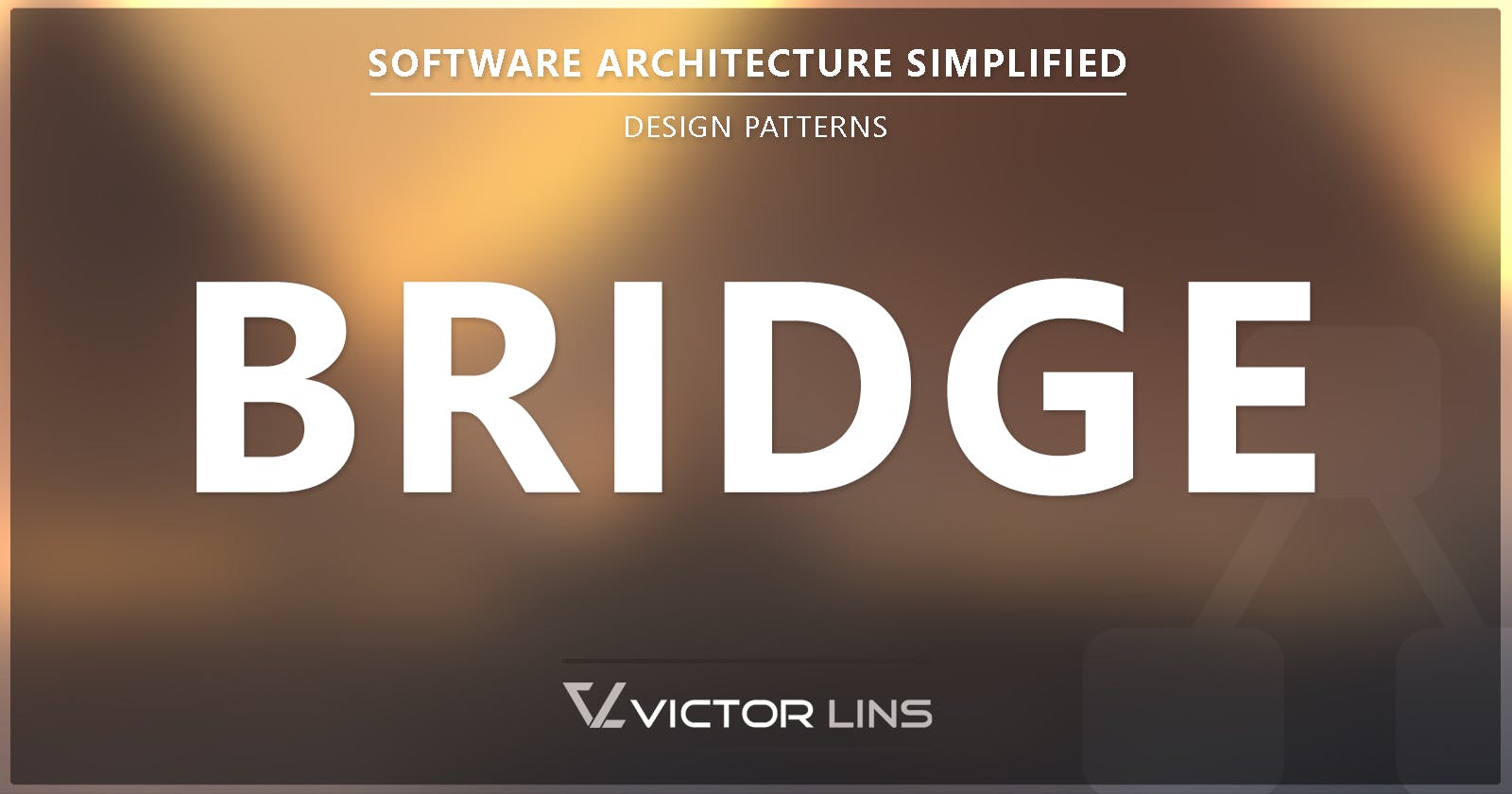Objective 🎯
Allow to decouple one abstraction from its implementation so that both can vary independently, in other words, it allows to split a large class into two separate hierarchies (abstraction and implementation).
Type ✅
❌Behavioral: Describes how objects interact/communicate between themselves.
❌Creational: Describes how to instantiate an object without large and complex.
✔️Structural: Describes how objects/classes are composed to form larger structures.
Notes 📝
• Bridge pattern comes as an option to avoid an inheritance problem known as “proliferation of classes” or “explosion of subclasses”

UML 📐

Participants 🔗
• Abstraction:
- Defines the abstraction’s interface
- Maintains a reference to an object of type Implementor
RefinedAbstraction:
- Extends the interface defined by Abstraction
• Implementor:
- Defines the interface for implementation classes.
• ConcreteImplementor:
- Implements the Implementor interface and defines its concrete implementation.
Sample Code 🎮
Structural Example 🏛️

public static class BridgeStructural
{
public static void Execute()
{
Abstraction lAbstraction = new RefinedAbstraction();
// Set Implementor to A
lAbstraction._Implementor = new ConcreteImplementorA();
lAbstraction.Operation();
// Set Implementor to B
lAbstraction._Implementor = new ConcreteImplementorB();
lAbstraction.Operation();
}
}
public class Abstraction
{
public Implementor _Implementor { get; set; }
public virtual void Operation()
{
_Implementor.Operation();
}
}
public abstract class Implementor
{
public abstract void Operation();
}
public class RefinedAbstraction : Abstraction
{
public override void Operation()
{
_Implementor.Operation();
}
}
public class ConcreteImplementorA : Implementor
{
public override void Operation()
{
Console.WriteLine("Concrete Implementor A - Executing Operation...");
}
}
public class ConcreteImplementorB : Implementor
{
public override void Operation()
{
Console.WriteLine("Concrete Implementor B - Executing Operation...");
}
}
Output

Real-world Example 🔥

public static class BridgePractical
{
public static void Execute()
{
Shape lShape = new Square();
// Set Implementor to Blue
lShape._ColorImplementor = new BlueImplementor();
lShape.Draw();
// Set Implementor to Red
lShape._ColorImplementor = new RedImplementor();
lShape.Draw();
}
}
public class Shape
{
public ColorImplementor _ColorImplementor { get; set; }
public virtual void Draw()
{
_ColorImplementor.Draw();
}
}
public class Square : Shape
{
public override void Draw()
{
_ColorImplementor.Draw();
}
}
public class Circle : Shape
{
public override void Draw()
{
_ColorImplementor.Draw();
}
}
public abstract class ColorImplementor
{
public abstract void Draw();
}
public class BlueImplementor : ColorImplementor
{
public override void Draw()
{
Console.WriteLine("Blue Implementor - Drawing a blue component...");
}
}
public class RedImplementor : ColorImplementor
{
public override void Draw()
{
Console.WriteLine("Red Implementor - Drawing a red component...");
}
}
Output


